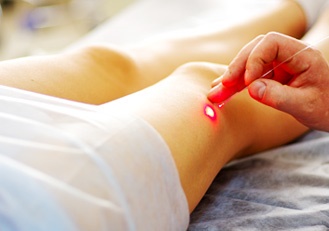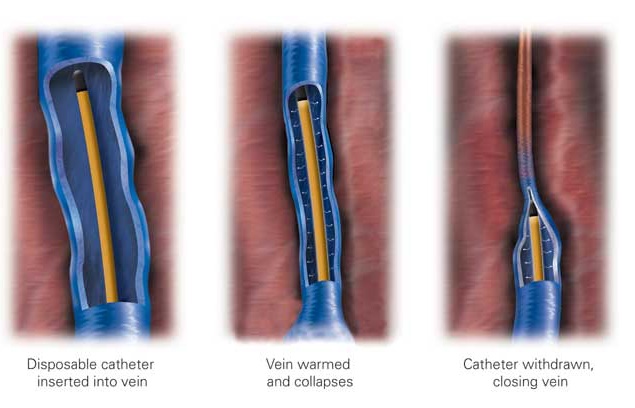Vein Treatment Options
There are many treatment options when treating vein disorders.. They range from simple changes in lifestyle to effective, non-invasive, in-office procedures
Lifestyle Changes to Help Prevent Varicose Veins
Changes in your everyday habits and routines can help prevent the formation of varicose veins. Below are a few suggestions:
- Avoid regularly wearing high heels. They limit the use of the calf muscles.
- Avoid restrictive clothing that limits blood flow in the groin or calf muscles.
- Avoid prolonged sitting or standing.
- Take time each day to elevate your legs or take a walk. This will stimulate increased blood flow in your legs and help prevent valve failure.
Relief From Leg Pain Caused By Your Veins – Compression Hose
Although compression hose does not treat the cause of vein disorders, they often provide relief from symptoms by preventing blood from pooling in the large veins and helping overall circulation. Compression hose also increase the long-term effectiveness of all vein treatments and are often used as an adjunct to treatments. Multiple sizes and styles are available here at the Utah Vein Treatment Center…Send us a note, or call and we’ll be happy to help.
Spider & Varicose Vein Treatment – Sclerotherapy
Sclerotherapy is a non-surgical office procedure that can treat most diseased surface veins. Medication is injected into a vein using special needles and syringes. In some circumstances, ultrasound imaging is used to ensure a precise injection. The medication closes down the vein walls so that they stick together and are gradually reabsorbed by the body.
Treated veins begin to dry up and finally disappear, usually within 6-8 weeks. Simple spider veins often require only one treatment, while deeper reticular and larger varicose veins may require several treatments depending on the severity of the condition.
Surface Varicose Vein Treatment – Ambulatory Phlebectomy
An ambulatory phlebectomy is a minimally invasive procedure that removes large surface varicose veins. After local anesthesia, the diseased veins are pulled up and delicately removed through very small punctures that do not require stitches. This procedure is often a more efficient way to treat large surface veins than sclerotherapy.
An End to Outdated Vein Stripping Techniques – The VNUS Closure Procedure
Here at the Utah Vein Treatment Center, we are proud to introduce the VNUS® Closure procedure, an alternative treatment option to traditional vein stripping surgery, brings state-of-the-art technology to an age-old disease.
The Closure procedure is performed on an outpatient basis using local anesthesia. Using ultrasound, Dr. Jensenwill position the Closure catheter into the diseased vein, through a small opening in the skin. The tiny catheter delivers radiofrequency (RF) energy to the vein wall. As the RF energy is delivered and the catheter is withdrawn, the vein wall is heated, causing the collagen in the wall to shrink and the vein to close. Once the diseased vein is closed, blood is re-routed to other healthy veins.
Following the procedure, a simple bandage is placed over the insertion site, and additional compression may be provided to aid healing. Your doctor may encourage you to walk, and to refrain from extended standing and strenuous activities for a period of time.
Patients who undergo the Closure procedure typically resume normal activities within a day.
98% of patients who have undergone the Closure procedure are willing to recommend it to a friend or family member.


